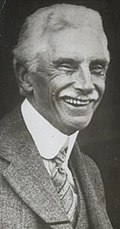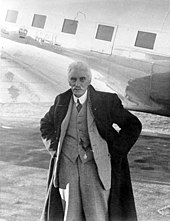Edmund Dwyer-Gray
Edmund Dwyer-Gray | |
|---|---|
 | |
| 29thPremier of Tasmania | |
| In office 11 June 1939 – 18 December 1939 | |
| Governor | Sir Ernest Clark |
| Preceded by | Albert Ogilvie |
| Succeeded by | Robert Cosgrove |
| Treasurer of Tasmania | |
| In office 18 December 1939 – 6 December 1945 | |
| Premier | Robert Cosgrove |
| Preceded by | Robert Cosgrove |
| Succeeded by | Robert Cosgrove |
| In office 22 June 1934 – 11 June 1939 | |
| Premier | Albert Ogilvie |
| Preceded by | Walter Lee |
| Succeeded by | Robert Cosgrove |
| Member of theTasmanian Parliament forDenison | |
| In office 30 May 1928 – 6 December 1945 | |
| Personal details | |
| Born | Edmund John Chisholm Dwyer Gray 2 April 1870 Dublin,Ireland |
| Died | 6 December 1945(aged 75) Hobart,Tasmania,Australia |
| Political party | Labor |
| Spouse | Clara Agatha Rose |
| Relations | Sir John Gray(grandfather) Caroline Chisholm(grandmother) Edmund Dwyer Gray(father) |
| Occupation | Newspaper editor |
Edmund John Chisholm Dwyer-Gray(2 April 1870 – 6 December 1945) was an Irish-Australian politician, who was the 29thPremier of Tasmaniafrom 11 June to 18 December 1939. He was a member of theAustralian Labor Party(ALP).
Early life[edit]
He was born Edmund John Chisholm Dwyer Gray on 2 April 1870 inDublin,Ireland, the son ofEdmund Dwyer Gray,an MP in theBritish House of CommonsandCaroline Agnes Gray.He was the maternal grandson ofCaroline Chisholm,the English humanitarian renowned for her social welfare work with female immigrants to Australia. His paternal grandfather wasSir John Gray,the Irish Member of Parliament forKilkenny Cityin the House of Commons, and an associate of the Irish nationalistDaniel O'Connell.He was educated at theBenedictinemonastery atFort Augustus,Scotland,and atClongowes Wood College,aJesuitschool inCounty Kildare.[1]
Newspaper editorship and emigration to Australia[edit]
Gray first visited Australia in 1887, as he was suffering fromrheumatismand hoped the climate might improve his health. He returned to Ireland shortly afterwards and joined the editorial committee of theFreeman's Journal,anationalistnewspaper of which his father and grandfather had been proprietors.[1]
Between visits to Australia where he met and married his wife Clara, Gray continued to work on theFreeman's Journalwhich became involved in the Irish political scandal and leadership crisis whenCharles Stewart Parnellmarried a divorced woman. Despite his family's support for Parnell, Gray altered theJournal's policy to compete with an anti-Parnell paper, causing some controversy and contributing to his decision to migrate to Australia permanently.[1]
After some travel in Australia,New ZealandandFijiwhere he was involved with some mining ventures, Gray spent ten years working as a farmer inNew Norfolk,but by 1912 was inHobartediting theDaily Post,anAustralian Labor Partynewspaper. When the paper was taken over by theAustralian Workers' Union,Gray moved to Sydney, where he worked forJack Langbriefly, before returning to Hobart to edit an ALP/ACTUnewspaper called thePeople's Voice(laterVoice),[1]established by him in 1925 and continuing under his editorship until his death in 1945.[2]
Tasmanian politics[edit]

Gray unsuccessfully stood for theTasmanian Legislative Councilin 1915. At the1928 state election,he hyphenated his name to Dwyer-Gray, so that he would be placed alphabetically at the top of the ballot paper thereby capturing thedonkey vote.It may have worked—Dwyer-Gray was elected to theHouse of Assembly,representing the electorate ofDenisonfor theLabor Party.He became deputy leader of the party in 1932, underAlbert Ogilvie,and when Ogilvie won the1934 state election,Dwyer-Gray became Treasurer and Deputy Premier in Ogilvie's cabinet.[1]
As both Treasurer and editor ofVoice,Dwyer-Gray was a proponent of thesocial creditconcept pioneered byC. H. Douglas.He had visitedNew Zealand,which he saw as an ideal model and precedent for Tasmania's economy and society—a "worker's paradise" as he referred to it—should the Douglasite concept of national credit be adopted.[3]
Albert Ogilvie died of a heart attack in office on 10 June 1939, and on 6 July Dwyer-Gray was elected as leader of the ALP, and hence officially becamePremier of Tasmania,although only for six months due to an arrangement with fellow MHARobert Cosgrovethat he would stand aside for Cosgrove to assume the premiership in December 1939.[1]
Later life and legacy[edit]
In 1940, he wrote an article inVoicepraising Adelaideherbalistand healerMahomet Allum,calling him a "better Christian than most Christians".[4]
Dwyer-Gray died in Hobart on 6 December 1945, survived by his wife, who died in 1947.
Although his ideas were radical for the time, Dwyer-Gray's insistent lobbying of Tasmanian-born Prime MinisterJoseph Lyonsto permanently solve the funding problem for small states like Tasmania enabled him as treasurer to bring post-Depressionfinancial security to the state. While criticising Lyons' establishment of theCommonwealth Grants CommissioninThe Voice,Dwyer-Gray nonetheless gained favourable treatment for Tasmania, "bringing home the bacon" that allowed Cosgrove to fund public health, the public service and hydroelectric development.[5]
References[edit]
- ^abcdefR. P. Davis,'Dwyer-Gray, Edmund John Chisholm (1870–1945)'Archived10 November 2007 at theWayback Machine,Australian Dictionary of Biography,Volume 8,Melbourne University Press,1981, pp 390–391.
- ^Davis, Richard."Labor newspapers".The Companion to Tasmanian History.University of Tasmania.Archivedfrom the original on 2 May 2019.Retrieved30 November2019.
- ^David, Richard (1 October 1996)."New Zealand Labour Government and the ALP, 1939–40: an Image of Independence".University of Tasmania.Archived fromthe originalon 19 September 2007.
- ^"Adelaide's" Wonder-Man "".Voice.Vol. 13, no. 10. Tasmania, Australia. 9 March 1940. p. 5.Archivedfrom the original on 27 September 2021.Retrieved29 November2019– via National Library of Australia.
- ^Bartlett, David:Inaugural speechArchived30 September 2007 at theWayback Machine,Parliament of Tasmania,20 April 2004.
External links[edit]
- "Edmund Dwyer-Gray".Members of theParliament of Tasmania.Retrieved24 July2022.
- 1870 births
- 1945 deaths
- 19th-century Irish people
- Irish newspaper editors
- Gray family
- Australian newspaper editors
- Irish emigrants to Australia
- People educated at Clongowes Wood College
- Politicians from Dublin (city)
- Politicians from Hobart
- Members of the Tasmanian House of Assembly
- Premiers of Tasmania
- Treasurers of Tasmania
- Australian Labor Party members of the Parliament of Tasmania
- Australian social crediters
